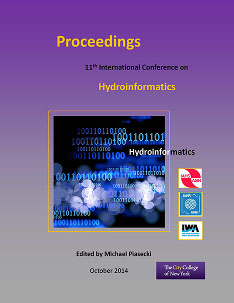Document Type
Presentation
Publication Date
8-1-2014
Abstract
Urban drainage systems are one of the most valuable public utilities in any community, which protects public health and the environment, nevertheless is one of the most overlooked infrastructures until considerable failures occurred. If there are not recurrent rehabilitation programs in place this vital infrastructure will decrease the level of service. This work presents an approach to find optimal rehabilitation measures based on the hydraulic performance of the system. To assess the performance of the urban drainage system a coupled 1D-2D model was developed. The model uses SWMM 5.0 for the 1D transport; to simulate the overland flow from the manholes when the capacity of the sewer pipes is exceeded a coupled 1D-2D non inertia model was used. The results are matrices composed of flood water depths and velocities values per each scenario of the flood event. These outputs are the main parameters to assess flood hazard. Furthermore, the vulnerability was assessed based on the socio-economic condition of the residents in the study area, located in a catchment area in Quito, Ecuador. The assessment of hazard and vulnerability were combined to estimate the flood risk damage. Several simulations were made for different flood events (10, 20, 50 and 100 year return period), obtaining Pareto sets per each event. However in order to have more realistic solutions the approach of expected annual flood risk cost were implemented to obtain integrated solutions for a number of flood events. Besides of these new solutions generated, the concept of cost-benefit analysis was applied to help in the identification of the most cost-effective solution. Keywords: Urban drainage systems, flood hazard, vulnerability, flood risk assessment, SWMM5, NSGAII, multi-objective-rehabilitation, genetic algorithms.


Comments
Session R35, Modeling of Urban Flooding I